This is named after the Great Scaldwood, an ancient forest covering much of Blanchardstown and Coolmine. By the mid-17th century, large numbers of wild boar and wolves roamed the ‘Great Wood’. The transformation of this sparsely populated area began in the 1960s. The Blanchardstown Centre opened in 1996, followed by the smaller Westend Retail Park and Westend Village, where these premises were purpose built as the West nightclub.
A photograph and text about The Great Wood.
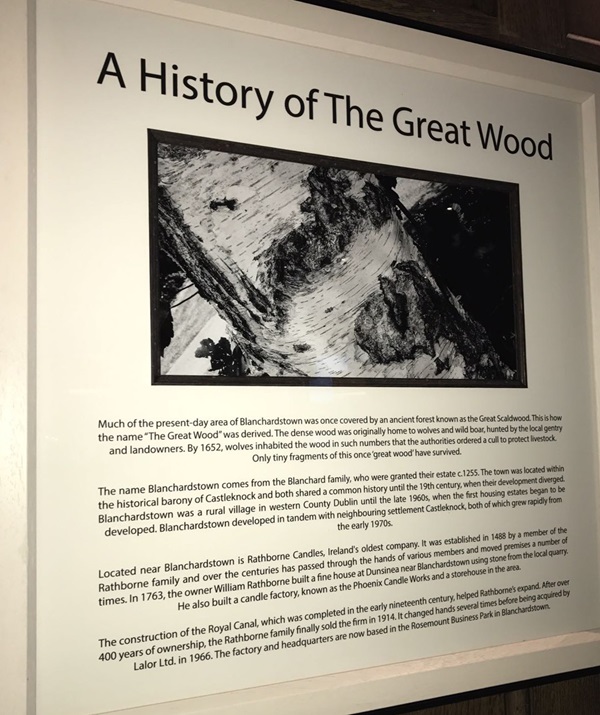
The text reads: Much of the present-day area of Blanchardstown was once covered by an ancient forest known as the Great Scaldwood. This is how the name The Great Wood was derived. The dense wood was originally home to wolves and wild boar, hunted by the local gentry and landowners. By 1652, wolves inhabited the wood in such numbers that the authorities ordered a cull to protect livestock. Only tiny fragments of this once ‘great wood’ have survived.
The name Blanchardstown comes from the Blanchard family, who were granted their estate c1255. The town was located within the historical barony of Castleknock and both shared a common history until the 19th century, when their development diverged. Blanchardstown was a rural village in western County Dublin until the late 1960s, when the first housing estates began to be developed. Blanchardstown developed in tandem with neighbouring settlement Castleknock, both of which grew rapidly from the early 1970s.
Located near Blanchardstown is Rathborne Candles, Ireland’s oldest company. It was established in 1488 by a member of the Rathborne family and over the centuries has passed through the hands of various members and moved premises a number of times. In 1763, the owner William Rathborne built a fine house at Dunsinea near Blanchardstown using stone from the local quarry. He also built a candle factory, known as the Phoenix Candle Works and a storehouse in the area.
The construction of the Royal Canal, which was completed in the early nineteenth century, helped Rathborne’s expand. After over 400 years of ownership, the Rathborne family finally sold the firm in 1914. It changed hands several times before being acquired by Lalor Ltd. In 1966. The factory and headquarters are now based in the Rosemount Business Park in Blanchardstown.
An etching and text about Áras an Uachtarárin.
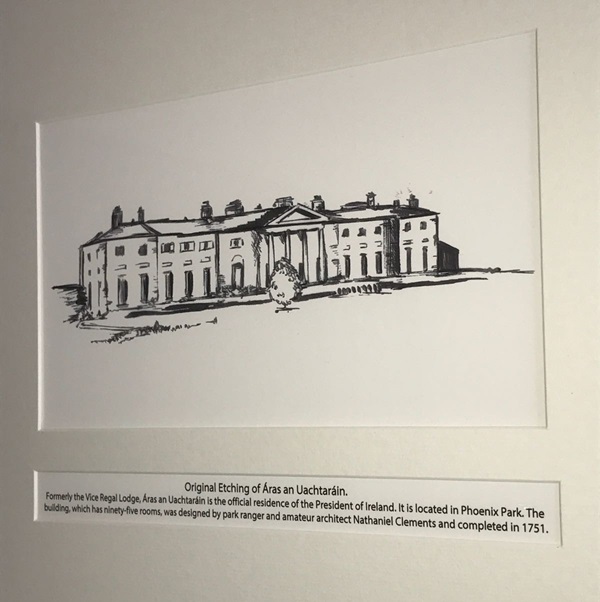
The text reads: Formerly the Vice Regal Lodge, Áras an Uachtarárin is the official residence of the President of Ireland. It is located in Phoenix Park. The building, which has ninety-five rooms, was designed by park ranger and amateur architect Nathaniel Clements and completed in 1751.
A copy of Rathborne’s advertisement that appeared in the Irish Hotelier March 1950.
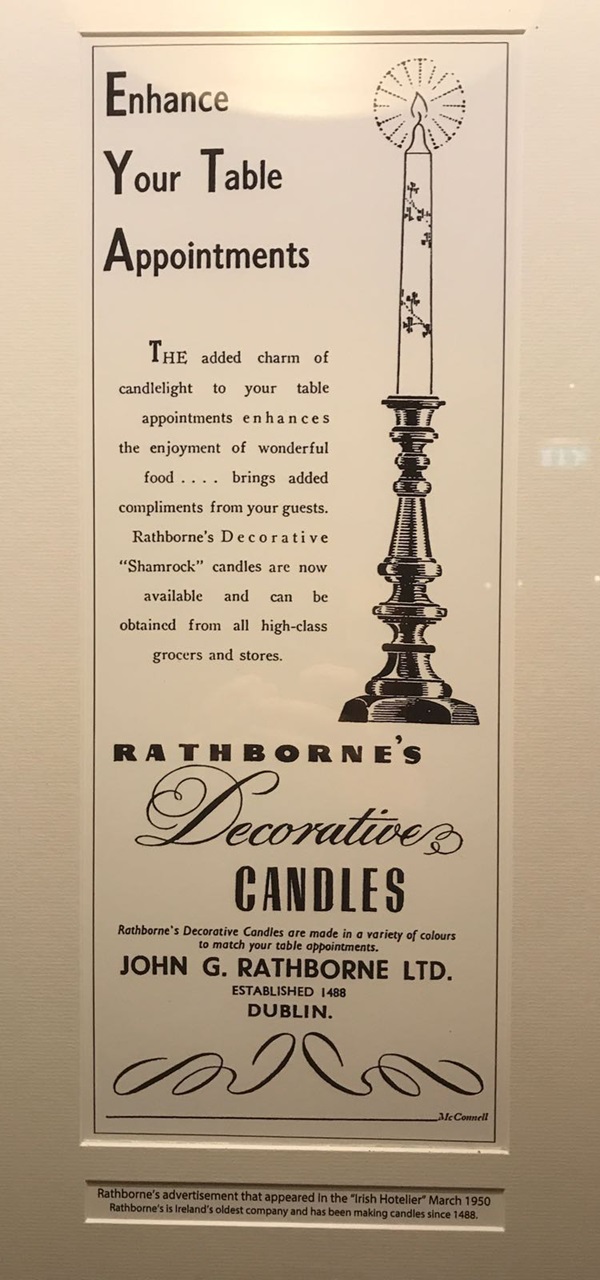
Rathborne’s is Ireland’s oldest company and has been making candles since 1488.
A photograph and text about John Flynn & Sons of Phibsboro, Dublin.
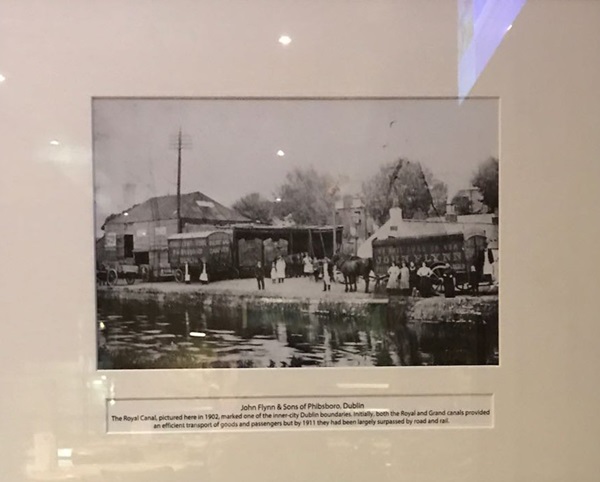
The text reads: The Royal Canal, pictured here in 1902, marked one of the inner-city Dublin boundaries. Initially, both the Royal and Grand canals provided an efficient transport of goods and passengers but by 1911 they had been largely surpassed by road and rail.
An illustration and text about John Brinkley, 1763-1835.
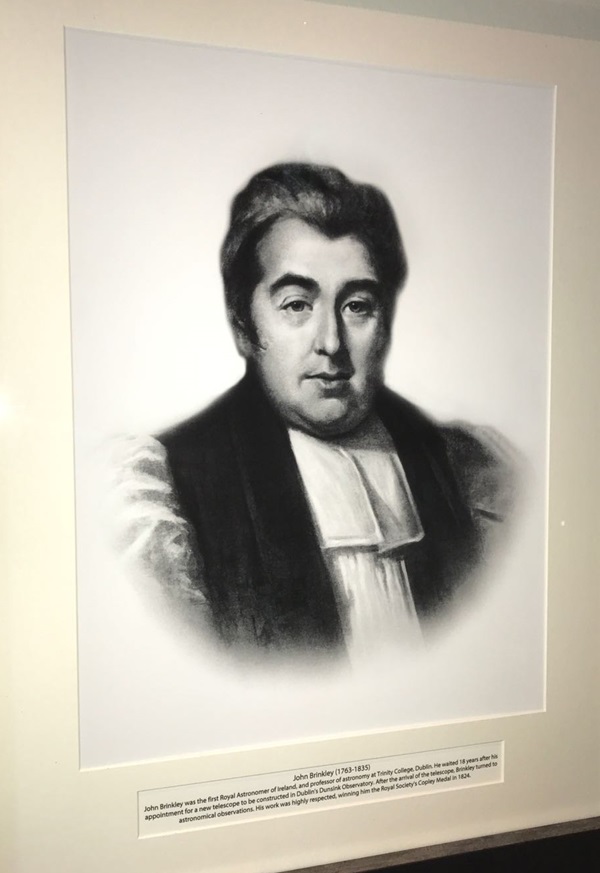
The text reads: John Brinkley was the first Royal Astronomer of Ireland, and professor of astronomy at Trinity College, Dublin. He waited 18 years after his appointment for a new telescope to be constructed in Dublin’s Dunsink Observatory. After the arrival of the telescope, Brinkley turned to astronomical observations. His work was highly respected, winning him the Royal Society’s Copley Medal in 1824.
An original page from The National Encyclopaedia of Universal Knowledge.
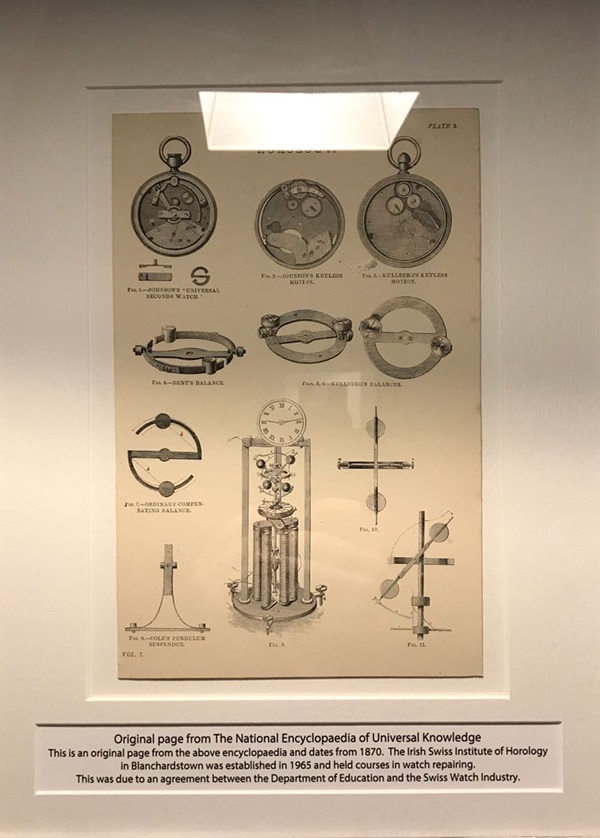
The text reads: This is an original page from the above encyclopaedia and dates from 1870. The Irish Swiss Institute of Horology in Blanchardstown was established in 1965 and held courses in watch repairing.
This was due to an agreement between the Department of Education and the Swiss Watch Industry.
A photograph and text about John Louis Emil Dreyer, 1852-1926.
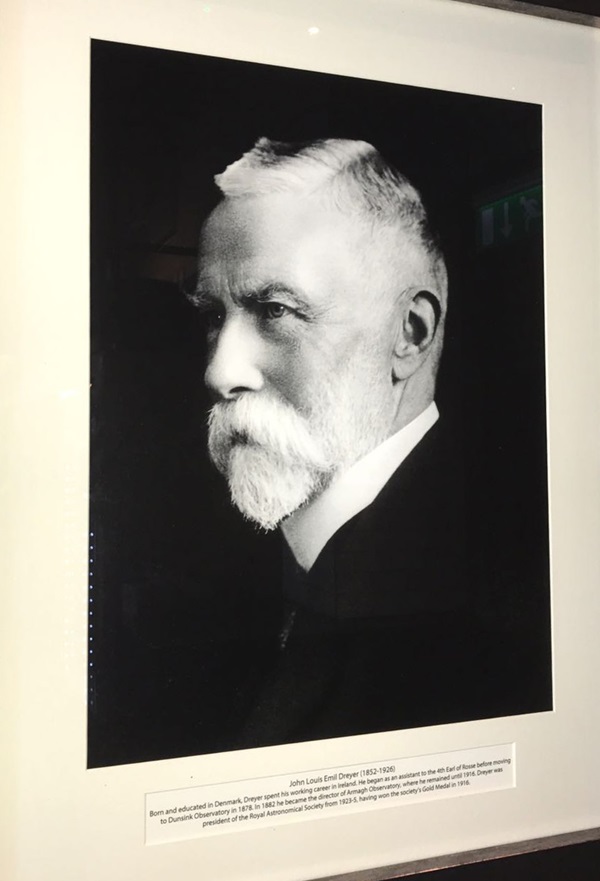
The text reads: Born and educated in Denmark, Dreyer spent his working career in Ireland. He began as an assistant to the 4th Earl of Rosse before moving to Dunsink Observatory in 1878. In 1882 he became the director of Armagh Observatory, where he remained until 1916. Dreyer was president of the Royal Astronomical Society from 1923-5, having won the society’s Gold Medal in 1916.
A sculpture and text about the candle.
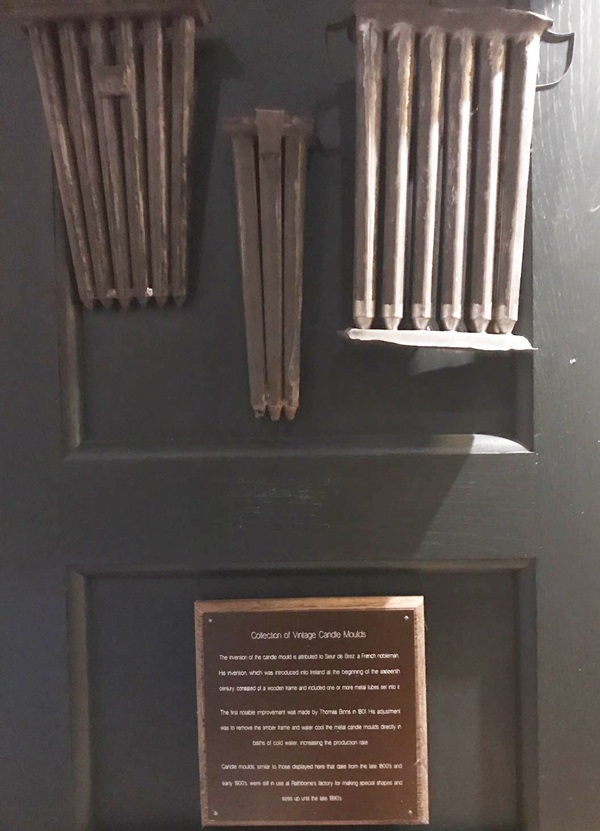
The text reads: The invention of the candle mould is attributed to Sieur de Brez, a French nobleman. His invention, which was introduced into Ireland at the beginning of the sixteenth century, consisted of a wooden frame and included one of more metal tubes set into it.
The first notable improvement was made by Thomas Binns in 1801. His adjustment was to remove the timber frame and water cool the metal candle moulds directly in baths of cold water, increasing the production rate.
Candle moulds, similar to those displayed here that date from the late 1800s and early 1900s, were still in use at Rathborne’s factory for making special shapes and sizes up until the late 1990s.
A painting and text about Dunsink Observatory, c1820.
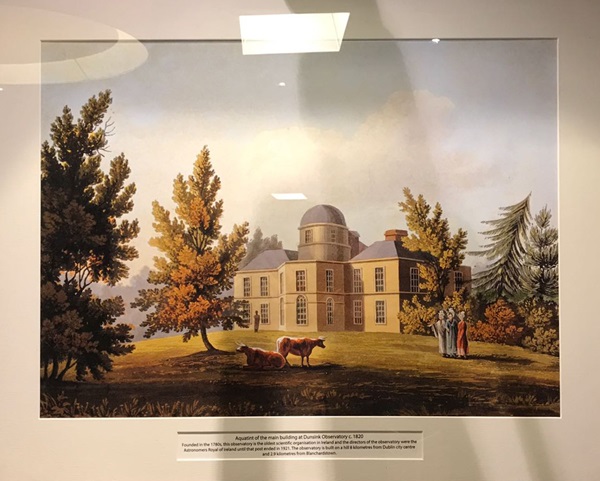
The text reads: Founded in the 1780s, this observatory is the oldest scientific organisation in Ireland and the directors of the observatory were the Astronomers Royal of Ireland until that post ended in 1921. The observatory is built on a hill 8 Kilometres from Dublin city centre and 2.9 kilometres from Blanchardstown.
An etching and text about Abbotstown House.
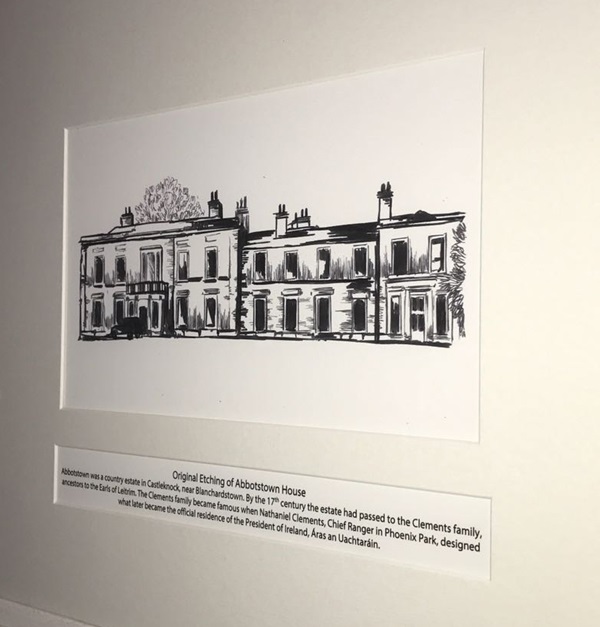
The text reads: Abbotstown was a country estate in Castleknock, near Blanchardstown. By the 17th century the estate had passed to the Clements family, ancestors to the Earls of Leitrim. The Clements family became famous when Nathaniel Clements, Chief Ranger in Phoenix Park, designed what later became the official residence of the President of Ireland, Áras an Uachtaráin.
A photograph and text about Blanchardstown brass band.
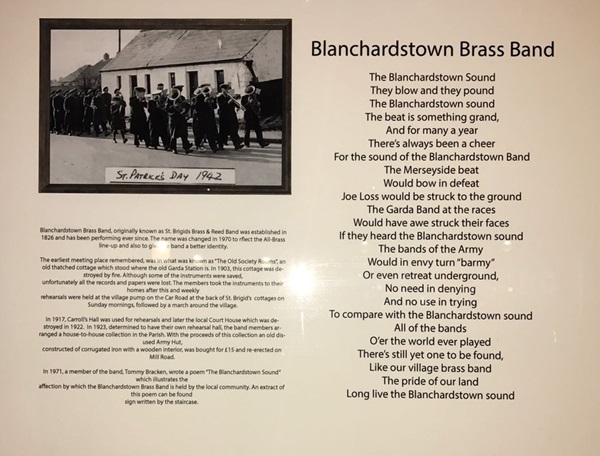
The text reads: Blanchardstown Brass Band, originally known as St. Brigids Brass & Reed Band was established in 1826 and has been performing ever since. The name was changed in 1970 to reflect the All-Brass line-up and also to give the band a better identity.
The earliest meeting place remembered, was in what was known as The Old Society Rooms, an old thatched cottage which stood where the old Garda Station is. In 1903, the cottage was destroyed by fire. Although some of the instruments were saved, unfortunately all the records and papers were lost. The members took the instruments to their homes after this and weekly rehearsals were held at the village pump on the Car Road at the back of St. Brigid’s cottages on Sunday mornings, follow by a march around the village.
In 1917, Carroll’s Hall was used for rehearsals and later the local Court House which was destroyed in 1922. In 1923, determined to have their own rehearsal hall, the band members arranged a house-to-house collection in the Parish. With the proceeds of this collection an old disused Army Hut, constructed of corrugated Iron with a wooden interior, was bought for £15 and re-erected on Mill Road.
In 1971, a member of the band, Tommy Bracken, wrote a poem The Blanchardstown Sound which illustrates the affection by which the Blanchardstown Brass Band is held by the local community. An extract of this poem can be found sign written by the staircase.
They blow and they pound
The Blanchardstown sound
The beat is something grand,
And for many a year
There’s always been a cheer
For the sound of the Blanchardstown Band
The Merseyside beat
Would bow in defeat
Joe Loss would be struck to the ground
The Garda Band at the races
Would have awe struck their faces
If they heard the Blanchardstown sound
The bands of the Army
Would in envy turn “barmy”
Or even retreat underground,
No need in denying
And no use in trying
To compare with the Blanchardstown sound
All of the bands
O’er the world ever played
There’s still yet one to be found,
Like our village brass band
The pride of our land
Long live the Blanchardstown sound
A photograph and text about Kearns Watchmaker, Dublin.
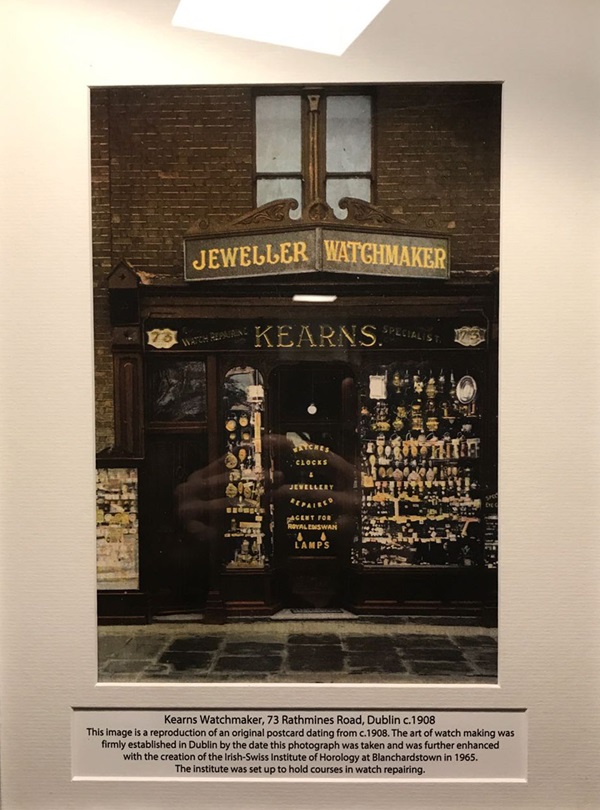
The text reads: This image is a reproduction of an original postcard dating from c1908. The art of watch making was firmly established in Dublin by the date this photograph was taken and was further enhanced with the creation of the Irish-Swiss Institute of Horology at Blanchardstown in 1965. The institute was set up to hold courses in watch repairing.
A photograph of the Royal Canal, Blanchardstown, c1938.
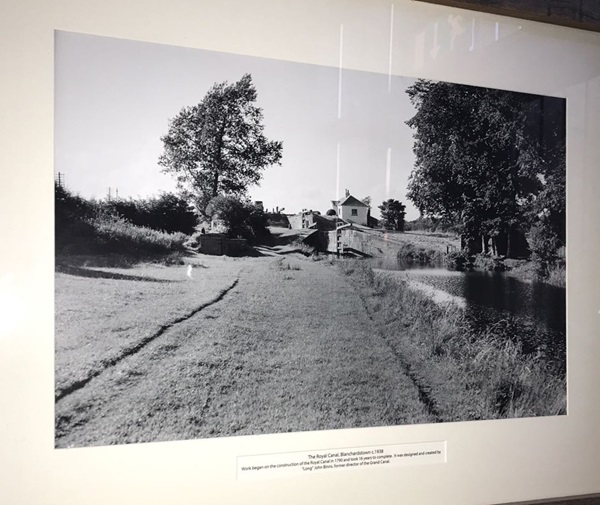
The text reads: Work began on the construction of the Royal Canal in 1790 and took 16 years to complete. It was designed and created by “Long” John Binns, former director of the Grand Canal.
A print and text about Sir Robert Stawell Ball, 1840-1913.
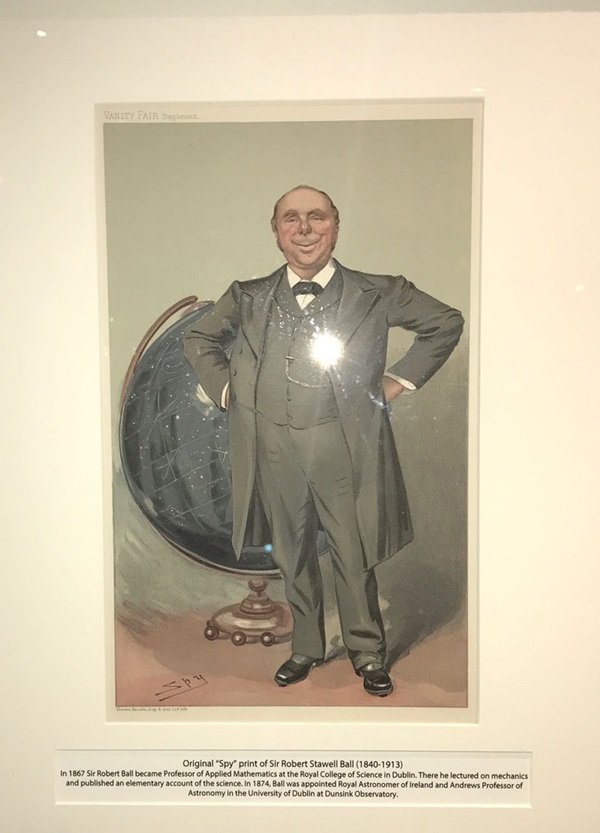
The text reads: In 1867 Sir Robert Ball became Professor of Applied Mathematics at the Royal College of Science in Dublin. There he lectured on mechanics and published an elementary account of the science. In 1874, Ball was appointed Royal Astronomer of Ireland and Andrews Professor of Astronomy in the University of Dublin at Dunsink Observatory.
An illustration and text about the Royal Canal Harbour, Dublin.
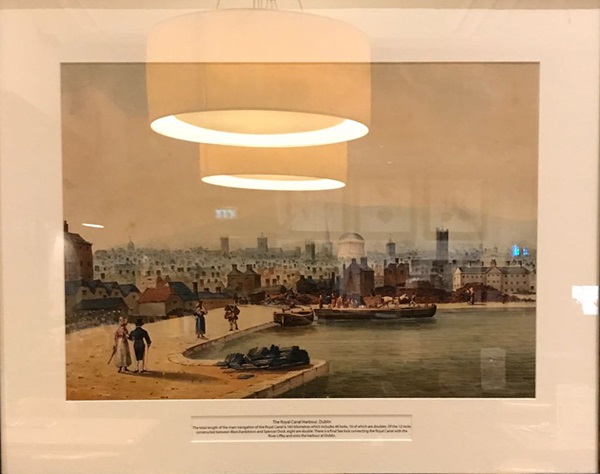
The text reads: The total length of the main navigation of the Royal Canal is 145 kilometres which includes 46 locks, 10 of which are doubles. Of the 12 locks constructed between Blanchardstown and Spencer Dock, eight are double. There is a final Sea lock connecting the Royal Canal with the River Liffey and onto the harbour at Dublin.
An illustration and text about the Dome House, Dunsink Observatory.
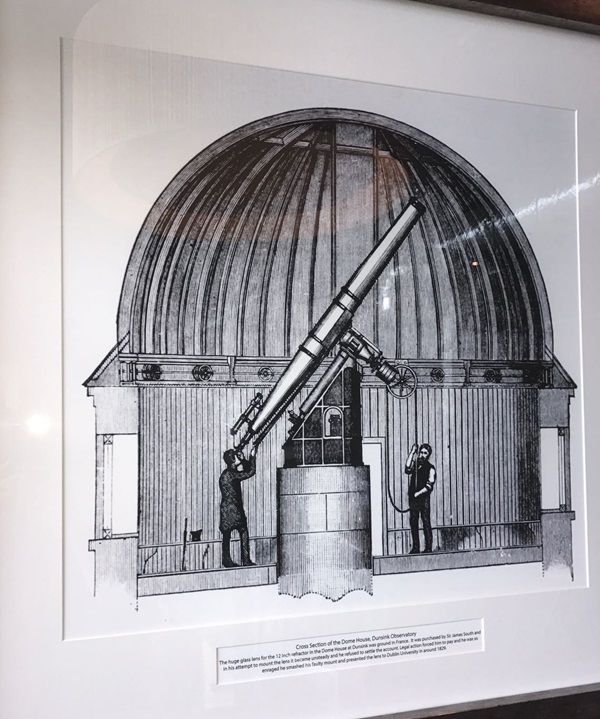
The text reads: The huge glass lens for the 12 inch refractor in the Dome House at Dunsink was ground in France. It was purchased by Sir James South and in his attempt to mount the lens it became unsteady and he refused to settle the account. Legal action forced him to pay and he was so enraged he smashed his faulty mount and presented the lens to Dublin University in around 1829.
An illustration and text about Dunsink Observatory.
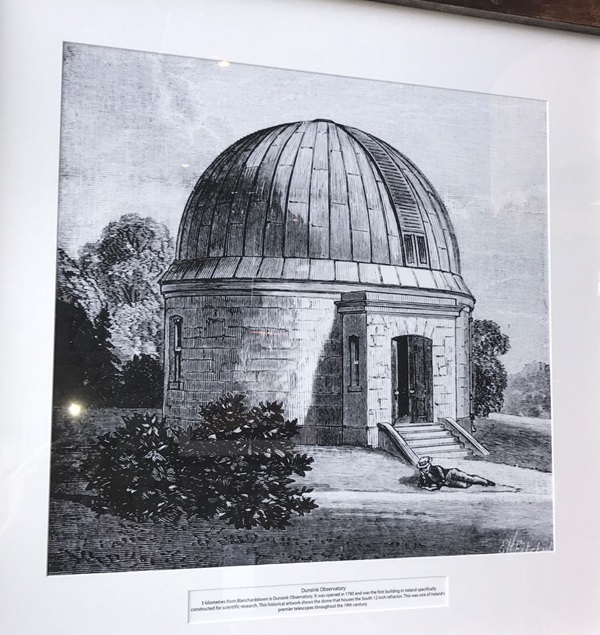
The text reads: 3 kilometres from Blanchardstown is Dunsink Observatory. It was opened in 1785 and was the first building in Ireland specifically constructed for scientific research. This historical artwork shows the dome that houses the South 12 inch refractor. This was one of Ireland’s premier telescopes throughout the 19th century.
External photograph of the building – main entrance.
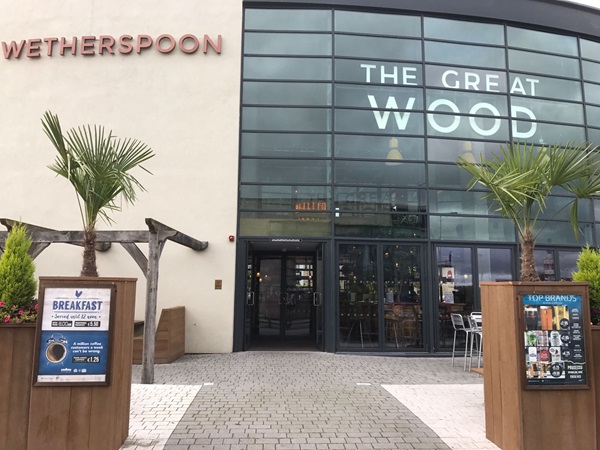
If you have information on the history of this pub, then we’d like you to share it with us. Please e-mail all information to: pubhistories@jdwetherspoon.co.uk